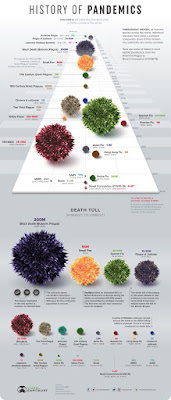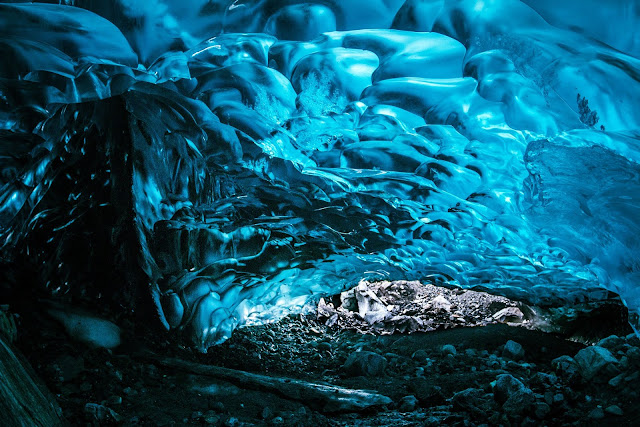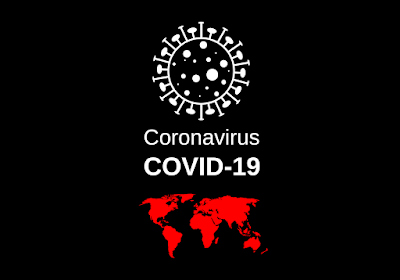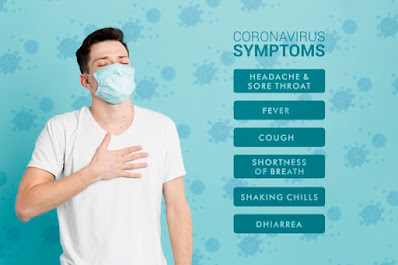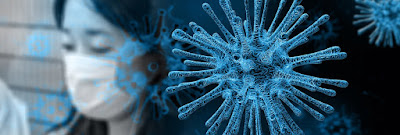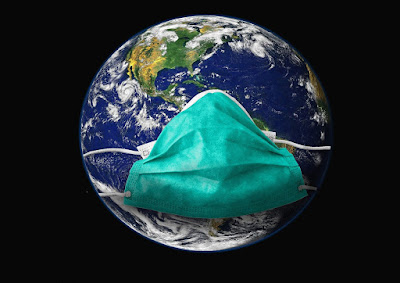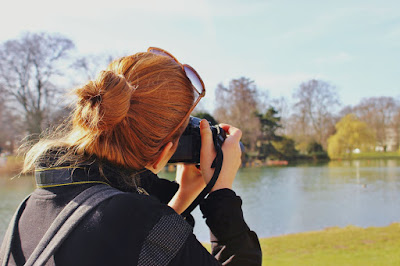Monday, March 16, 2020
Hidden diseases in ice waking up
This article was originally posted by Jasmin Fox-Skelly in 2017 for BBC Earth. Due to world recent events, we thought these details are very important for everyone.
Long-dormant bacteria and viruses, trapped in ice and permafrost for centuries, are reviving as Earth's climate warms.
Throughout history, humans have existed side-by-side with bacteria and viruses. From the bubonic plague to smallpox, we have evolved to resist them, and in response, they have developed new ways of infecting us.
We have had antibiotics for almost a century, ever since Alexander Fleming discovered penicillin. In response, bacteria have responded by evolving antibiotic resistance. The battle is endless: because we spend so much time with pathogens, we sometimes develop a kind of natural stalemate.
However, what would happen if we were suddenly exposed to deadly bacteria and viruses that have been absent for thousands of years, or that we have never met before?
We may be about to find out. Climate change is melting permafrost soils that have been frozen for thousands of years, and as the soils melt they are releasing ancient viruses and bacteria that, having lain dormant, are springing back to life.
In August 2016, in a remote corner of Siberian tundra called the Yamal Peninsula in the Arctic Circle, a 12-year-old boy died and at least twenty people were hospitalized after being infected by anthrax.
The theory is that, over 75 years ago, a reindeer infected with anthrax died and its frozen carcass became trapped under a layer of frozen soil, known as permafrost. There it stayed until a heatwave in the summer of 2016, when the permafrost thawed.
This exposed the reindeer corpse and released infectious anthrax into nearby water and soil, and then into the food supply. More than 2,000 reindeer grazing nearby became infected, which then led to the small number of human cases.
The fear is that this will not be an isolated case.
As the Earth warms, more permafrost will melt. Under normal circumstances, superficial permafrost layers about 50cm deep melt every summer. But now global warming is gradually exposing older permafrost layers.
Frozen permafrost soil is the perfect place for bacteria to remain alive for very long periods of time, perhaps as long as a million years. That means melting ice could potentially open a Pandora's box of diseases.
The temperature in the Arctic Circle is rising quickly, about three times faster than in the rest of the world. As the ice and permafrost melt, other infectious agents may be released.
"Permafrost is a very good preserver of microbes and viruses because it is cold, there is no oxygen, and it is dark," says evolutionary biologist Jean-Michel Claverie at Aix-Marseille University in France. "Pathogenic viruses that can infect humans or animals might be preserved in old permafrost layers, including some that have caused global epidemics in the past."
In the early 20th Century alone, more than a million reindeer died from anthrax. It is not easy to dig deep graves, so most of these carcasses are buried close to the surface, scattered among 7,000 burial grounds in northern Russia.
However, the big fear is what else is lurking beneath the frozen soil.
People and animals have been buried in permafrost for centuries, so it is conceivable that other infectious agents could be unleashed. For instance, scientists have discovered fragments of RNA from the in corpses buried in mass graves in Alaska's tundra. Smallpox and the bubonic plague are also likely buried in Siberia.
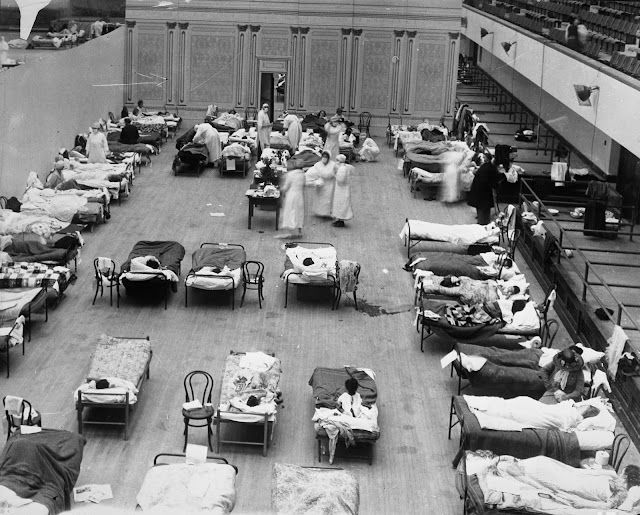 |
| 1918 Spanish flu virus |
In a 2011 study, Boris Revich and Marina Podolnaya wrote: "As a consequence of permafrost melting, the vectors of deadly infections of the 18th and 19th Centuries may come back, especially near the cemeteries where the victims of these infections were buried."
For instance, in the 1890s there was a major epidemic of smallpox in Siberia. One town lost up to 40% of its population. Their bodies were buried under the upper layer of permafrost on the banks of the Kolyma River. 120 years later, Kolyma's floodwaters have started eroding the banks, and the melting of the permafrost has speeded up this erosion process.
In a project that began in the 1990s, scientists from the State Research Center of Virology and Biotechnology in Novosibirsk have tested the remains of Stone Age people that had been found in southern Siberia, in the region of Gorny Altai. They have also tested samples from the corpses of men who had died during viral epidemics in the 19th Century and were buried in the Russian permafrost.
The researchers say they have found bodies with sores characteristic of the marks left by smallpox. While they did not find the smallpox virus itself, they have detected fragments of its DNA.
Certainly, it is not the first time that bacteria frozen in ice have come back to life.
In a 2005 study, NASA scientists successfully revived bacteria that had been encased in a frozen pond in Alaska for 32,000 years. The microbes, called Carnobacterium pleistocenium, had been frozen since the Pleistocene period when woolly mammoths still roamed the Earth. Once the ice melted, they began swimming around, seemingly unaffected.
Two years later, scientists managed to revive an 8-million-year-old bacterium that had been lying dormant in ice, beneath the surface of a glacier in the Beacon and Mullins valleys of Antarctica. In the same study, bacteria were also revived from ice that was over 100,000 years old.
However, not all bacteria can come back to life after being frozen in permafrost. Anthrax bacteria can do so because they form spores, which are extremely hardy and can survive frozen for longer than a century.
Other bacteria that can form spores, and so could survive in permafrost, include tetanus and Clostridium botulinum, the pathogen responsible for botulism: a rare illness that can cause paralysis and even prove fatal. Some fungi can also survive in permafrost for a long time.
Some viruses can also survive for lengthy periods.
In a 2014 study, a team led by Claverie revived two viruses that had been trapped in the Siberian permafrost for 30,000 years. Known as Pithovirus sibericum and Mollivirus sibericum, they are both "giant viruses", because unlike most viruses they are so big they can be seen under a regular microscope. They were discovered 100ft underground in coastal tundra.
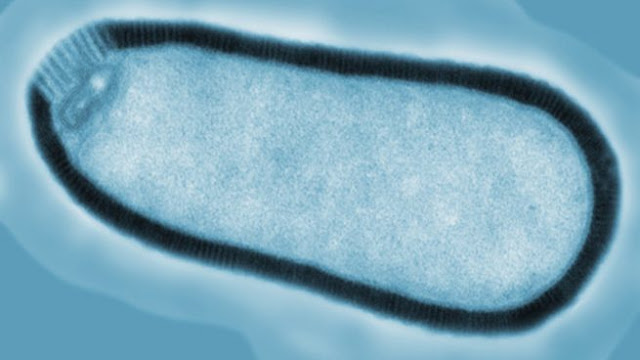 |
| Pithovirus sibericum |
Once they were revived, the viruses quickly became infectious. Fortunately for us, these particular viruses only infect single-celled amoebas. Still, the study suggests that other viruses, which really could infect humans, might be revived in the same way.
What's more, global warming does not have to directly melt permafrost to pose a threat. Because the Arctic sea ice is melting, the north shore of Siberia has become more easily accessible by sea. As a result, industrial exploitation, including mining for gold and minerals, and drilling for oil and natural gas, is now becoming profitable.
"At the moment, these regions are deserted and the deep permafrost layers are left alone," says Claverie. "However, these ancient layers could be exposed by the digging involved in mining and drilling operations. If viable virions are still there, this could spell disaster."
Giant viruses may be the most likely culprits for any such viral outbreak.
"Most viruses are rapidly inactivated outside host cells, due to light, desiccation, or spontaneous biochemical degradation," says Claverie. "For instance, if their DNA is damaged beyond possible repair, the virions will no longer be infectious. However, among known viruses, the giant viruses tend to be very tough and almost impossible to break open."
Claverie says viruses from the very first humans to populate the Arctic could emerge. We could even see viruses from long-extinct hominin species like Neanderthals and Denisovans, both of which settled in Siberia and were riddled with various viral diseases. Remains of Neanderthals from 30-40,000 years ago have been spotted in Russia. Human populations have lived there, sickened and died for thousands of years.
"The possibility that we could catch a virus from a long-extinct Neanderthal suggests that the idea that a virus could be 'eradicated' from the planet is wrong, and gives us a false sense of security," says Claverie. "This is why stocks of vaccine should be kept, just in case."
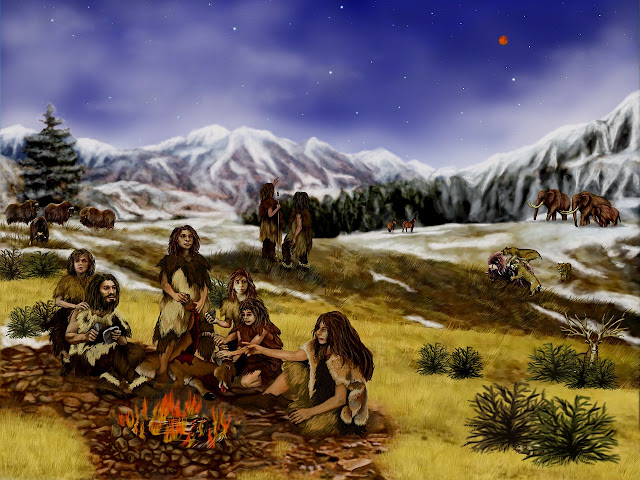 |
| Neanderthals |
Since 2014, Claverie has been analyzing the DNA content of permafrost layers, searching for the genetic signature of viruses and bacteria that could infect humans. He has found evidence of many bacteria that are probably dangerous to humans. The bacteria have DNA that encodes virulence factors: molecules that pathogenic bacteria and viruses produce, which increase their ability to infect a host.
Claverie's team has also found a few DNA sequences that seem to come from viruses, including herpes. However, they have not as yet found any trace of smallpox. For obvious reasons, they have not attempted to revive any of the pathogens.
It now seems that pathogens cut off from humans will emerge from other places too, not just ice or permafrost.
In February 2017, NASA scientists announced that they had found 10-50,000-year-old microbes inside crystals in a Mexican mine.
The bacteria were located in the Cave of the Crystals, part of a mine in Naica in northern Mexico. The cave contains many milky-white crystals of the mineral selenite, which formed over hundreds of thousands of years.
The bacteria were trapped inside small, fluid pockets of the crystals, but once they were removed they revived and began multiplying. The microbes are genetically unique and may well be new species, but the researchers are yet to publish their work.
Even older bacteria have been found in the Lechuguilla Cave in New Mexico, 1,000ft underground. These microbes have not seen the surface for over 4 million years.
The cave never sees sunlight, and it is so isolated that it takes about 10,000 years for water from the surface to get into the cave.
Despite this, the bacteria have somehow become resistant to 18 types of antibiotics, including drugs considered to be a "last resort" for fighting infections. In a study published in December 2016, researchers found that the bacteria, known as Paenibacillus sp. LC231, was resistant to 70% of antibiotics and was able to totally inactivate many of them.
As the bacteria have remained completely isolated in the cave for four million years, they have not come into contact with people or the antibiotic drugs used to treat human infections. That means its antibiotic resistance must have arisen in some other way.
The scientists involved believe that the bacteria, which does not harm humans, is one of many that have naturally evolved resistance to antibiotics. This suggests that antibiotic resistance has been around for millions or even billions of years.
Obviously, such ancient antibiotic resistance cannot have evolved in the clinic as a result of antibiotic use.
The reason for this is that many types of fungi, and even other bacteria, naturally produce antibiotics to gain a competitive advantage over other microbes. That is how Fleming first discovered penicillin: bacteria in a petri dish died after one became contaminated with an antibiotic-excreting mould.
In caves, where there is little food, organisms must be ruthless if they are to survive. Bacteria like Paenibacillus may have had to evolve antibiotic resistance in order to avoid being killed by rival organisms.
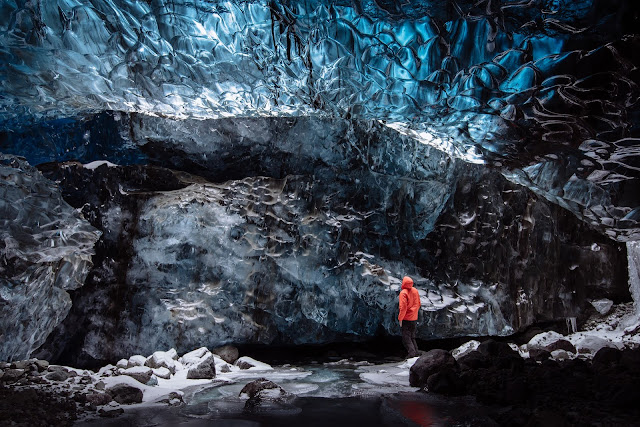 |
| glacier ice cave-Iceland |
This would explain why the bacteria are only resistant to natural antibiotics, which come from bacteria and fungi and make up about 99.9% of all the antibiotics we use. The bacteria have never come across man-made antibiotics, so do not have a resistance to them.
"Our work, and the work of others, suggests that antibiotic resistance is not a novel concept," says microbiologist Hazel Barton of the University of Akron, Ohio, who led the study. "Our organisms have been isolated from surface species from 4-7 million years, yet the resistance that they have is genetically identical to that found in surface species. This means that these genes are at least that old, and didn't emerge from the human use of antibiotics for treatment."
Although Paenibacillus itself is not harmful to humans, it could in theory pass on its antibiotic resistance to other pathogens. However, as it is isolated beneath 400m of rock, this seems unlikely.
Nevertheless, natural antibiotic resistance is probably so prevalent that many of the bacteria emerging from melting permafrost may already have it. In line with that, in a 2011 study scientists extracted DNA from bacteria found in 30,000-year-old permafrost in the Beringian region between Russia and Canada. They found genes encoding resistance to beta-lactam, tetracycline and glycopeptide antibiotics.
How much should we be concerned about all this?
One argument is that the risk from permafrost pathogens is inherently unknowable, so they should not overtly concern us. Instead, we should focus on more established threats from climate change. For instance, as Earth warms northern countries will become more susceptible to outbreaks of "southern" diseases like malaria, cholera and dengue fever, as these pathogens thrive at warmer temperatures.
The alternative perspective is that we should not ignore risks just because we cannot quantify them.
"Following our work and that of others, there is now a non-zero probability that pathogenic microbes could be revived, and infect us," says Claverie. "How likely that is is not known, but it's a possibility. It could be bacteria that are curable with antibiotics, or resistant bacteria, or a virus. If the pathogen hasn't been in contact with humans for a long time, then our immune system would not be prepared. So yes, that could be dangerous."
Source: BBC Earth
Saturday, March 14, 2020
Special Message for Travelers from TripAdvisor CEO Steve Kaufer
Dear
fellow
travelers,
As a site that millions around the world count on for travel guidance, Tripadvisor is closely monitoring the impact of Coronavirus (COVID-19) on both travelers and the travel industry.
We care deeply about your safety, whether you are at home or traveling. With this in mind, I would like to share some resources we’ve created and the actions we’re taking to help you make informed decisions about your own travel plans.
Helping you make travel decisions
As this situation rapidly evolves, we know there is an atmosphere of uncertainty as travelers wonder if they should change their plans. That’s why, starting today, Tripadvisor will feature alerts for destinations that the World Health Organization (WHO) has designated as heavily impacted. We’ve also launched a new resource page to bring all the latest COVID-19 travel information from trusted sources together in one place.
Keeping you informed if you are traveling
As travel-related business owners continue to adapt as a result of COVID-19, they are making changes to their hours, making changes in service or even temporarily closing. We are making daily updates to the information on our site to keep travelers informed. We’re also doing what we can to help businesses in impacted regions, by providing them with tips and advice on how to weather this challenging time.
What you can do to stay healthy
Whether you’re at home or traveling, the WHO recommends practicing good hygiene to protect yourself against infection — by washing your hands frequently with soap or alcohol-based sanitizer, maintaining distance between yourself and anyone who is coughing or sneezing, and avoiding touching your eyes, nose and mouth. If you become sick, please seek medical attention quickly.
For more information, please visit our resource page. You can also connect to other travelers and join discussions about COVID-19 and how it may affect your plans in Tripadvisor's forums.
fellow
travelers,
As a site that millions around the world count on for travel guidance, Tripadvisor is closely monitoring the impact of Coronavirus (COVID-19) on both travelers and the travel industry.
We care deeply about your safety, whether you are at home or traveling. With this in mind, I would like to share some resources we’ve created and the actions we’re taking to help you make informed decisions about your own travel plans.
Helping you make travel decisions
As this situation rapidly evolves, we know there is an atmosphere of uncertainty as travelers wonder if they should change their plans. That’s why, starting today, Tripadvisor will feature alerts for destinations that the World Health Organization (WHO) has designated as heavily impacted. We’ve also launched a new resource page to bring all the latest COVID-19 travel information from trusted sources together in one place.
Keeping you informed if you are traveling
As travel-related business owners continue to adapt as a result of COVID-19, they are making changes to their hours, making changes in service or even temporarily closing. We are making daily updates to the information on our site to keep travelers informed. We’re also doing what we can to help businesses in impacted regions, by providing them with tips and advice on how to weather this challenging time.
What you can do to stay healthy
Whether you’re at home or traveling, the WHO recommends practicing good hygiene to protect yourself against infection — by washing your hands frequently with soap or alcohol-based sanitizer, maintaining distance between yourself and anyone who is coughing or sneezing, and avoiding touching your eyes, nose and mouth. If you become sick, please seek medical attention quickly.
For more information, please visit our resource page. You can also connect to other travelers and join discussions about COVID-19 and how it may affect your plans in Tripadvisor's forums.
Stay safe,
Steve Kaufer
Co-founder and CEO
Tripadvisor
Steve Kaufer
Co-founder and CEO
Tripadvisor
Thursday, March 12, 2020
The way to put together for the Corona Virus
Coronavirus circumstances continued to be confirmed in the world large. By following some primary steps, you'll be able to assist cut back your threat and do your half to guard others, in case your neighborhood is affected.
Right here’s what you are able to do:
- Keep your hands clean, and maintain your distance from sick individuals
- Stay residence in case you are sick
- Except you're already infected, face masks won’t assist
- Replenish on dwelling provides, drugs and sources
- Put together your loved ones, and talk your plan
- With kids, preserve calm and stick with it — and get the flu shot
- Involved in the inventory market? Take a deep breath.
The coronavirus continues to unfold worldwide, with lots of sickened and dozens lifeless in the USA.
Wellbeing specialists have been warning that the viruses unfold within the nation is inevitable. Which means it’s time to organize your own home and household in case your neighborhood is affected.
Most necessary: Don't panic. Whereas the outbreak is a critical public well-being concern, the vast majority of those that contract the coronavirus don't develop into severely unwell, and solely a small share requires intensive care.
By following some primary steps, you'll be able to assist cut back your threat and do your half to guard others.
Maintain your arms clear, and preserve your distance from sick individuals
Wash your arms. It’s not attractive, nevertheless, it works.
It’s value repeating, again and again: wash your arms. Moist your arms with clear operating water after which lather them with cleaning soap; don’t miss the backs of your arms, between your fingers or beneath your nails. Be sure that to wash for at the least 20 seconds (or concerning the time it takes to sing “Completely happy Birthday” twice), and dry them with a clean towel or allow them to air dry.
Alcohol-based hand sanitizers, which must be rubbed in for about 20 seconds, also can work, however, the gel should include at the least 60 p.c alcohol.
The Facilities for Illness Management and Prevention recommends you keep away from touching your eyes, nostril, and mouth with unwashed arms (robust one, we all know).
In the meantime, if another person is exhibiting flu- or cold-like signs, attempt to keep six ft away. If that’s not potential, even slightly distancing is useful, in response to specialists, because the virus appears to unfold by droplets within the air from a cough or sneeze.
Sneezing or coughing your self? Direct it into your elbow in order to keep away from leaving germs in your arms, which may then shortly unfold to different surfaces. Different methods to be good embrace utilizing the “Ebola handshake,” the place you greet others with elbow bumps and pushing elevator buttons with a knuckle as a substitute of a fingertip.
Keep dwelling in case you are sick
Defend different individuals from infection by being further cautious in case you are not feeling effective.
Coronavirus begins deep within the lungs, and the most typical indicators are fever and dry cough, adopted by fatigue and shortness of breath. In case you have any of those signs, please make each effort to stay at dwelling. Don’t go to the workplace; don’t drive the youngsters to high school; don’t go to the shop; don’t experience public transportation. If kids exhibit any sickness, they too ought to stay dwelling from faculty.
Contact your employer and inform them of your sickness and work out the right way to finest handle your job from dwelling.
In case you start to have an excessive fever, shortness of breath or another extra critical symptom, the most effective factor to do is to name your physician to allow them to know and inquire about subsequent steps. (Testing for coronavirus is inconsistent proper now — there will not be sufficient testing kits, and it’s harmful to individuals with coronavirus to enter a physician’s workplace and threat infecting others. So please observe your physician’s directions.) Test the C.D.C. web site and your native well-being division for recommendation about how and the place to be examined.
Except you're already infected, face masks won’t help
However for those who’re contaminated, masks may help stop the unfold of a virus.
Face masks have developed into virtually synonymous with the coronavirus outbreak abroad, however, they don’t do a lot to guard you — most surgical masks are too unfastened to forestall inhalation of the virus.
The C.D.C. and infectious illness specialists don't advocate face masks for those who’re wholesome.
However, for those who’re a well-being care employee or are caring for sick individuals at dwelling or in a well-being care facility, you must put on one.
In case you’re contaminated, masks may help stop the unfold of a virus. The best is the so-called N95 masks, which block 95 p.c of very small particles.
On Saturday, the surgeon basically urged the general public to cease stockpiling masks, warning that it gained assistance towards the unfold of the coronavirus however will take away necessary sources from well-being care professionals.
Replenish on dwelling provides, drugs and sources
Skip the masks, however don’t skimp in your family provides — and that goes for prescription and over-the-counter drugs, too.
Consultants recommend stocking at the least a 30-day provision of any wanted prescriptions, and you must take into account doing the identical for home goods like meals staples, laundry detergent, and diapers, in case you have babies.
Bear in mind, alcohol is an efficient disinfectant for coronaviruses so be certain to maintain surfaces in your house clean. Throw out these tissues in a wastebasket after you blow your nostrils.
The C.D.C. additionally recommends cleansing “excessive contact” surfaces, like telephones and tablets.
Past bodily gadgets, put together your own home for a possible outbreak in the USA by staying up-to-date with dependable information sources, akin to the web site of your native well-being division.
Put together your loved ones, and talk your plan
Create household emergency guidelines that solutions primary questions on evacuations, sources and provides.
Be sure that each member of the household is up-to-date on any and all emergency plans.
Make sure to be in communication along with your youngster’s faculty on what varieties of plans are established for any kind of schedule change, together with early dismissals or on-line instruction. And in case you have aged mother and father or kin, or relations with any particular well-being considerations, be sure you have a plan for caring for them in the event that they get sick.
There’s additionally some reassurance that may very well be had by making a household emergency guidelines, which might reply primary questions on evacuations, sources and provides — particularly in case you have any preconditions or sicknesses. The C.D.C. offers guidelines right here.
With kids, preserve calm and stick with it — and get the flu shot
The excellent news is that coronavirus circumstances in kids have been very uncommon.
Defend your youngster by taking the identical precautions you'll throughout chilly and flu season: encourage frequent hand washing, transfer away from people who find themselves coughing or sneezing and get the flu shot.
Consultants advocate getting the flu vaccine, noting that vaccinating kids is the most effective safety for older individuals towards bacterial pneumonia.
Proper now, there’s no cause for folks to fret, the specialists say, and the excellent news is that coronavirus circumstances in kids have been very uncommon.
When speaking to your kids about an outbreak, be sure you first assess their data of the virus and that you just course of your individual nervousness. It’s necessary that you just don’t dismiss their fears and converse to them at an age-appropriate degree.
So preserve calm, and if there’s an outbreak in your neighborhood, apply what’s often called “social distancing,” which suggests extra TV bingeing at dwelling and fewer journeys to the park.
Concerned about the stock market? Take a deep breath.
There’s little cause to be alarmed long-term, even with the current declines.
Regardless of monetary markets on a curler coaster, The Instances monetary columnist Ron Lieber says there’s little cause to be alarmed long-term. In any case, “shares are how your financial savings combat inflation, the market shouldn't be an absolute proxy in your private funds, and also you’re taking part in a protracted recreation.”
“Shares have delivered respectable positive factors over lengthy durations of time to individuals who persist, and profitable buyers don't purchase when costs are excessive and promote when they're low,” he stated.
“Nothing that's taking place as we speak modifications that.”
Your trip might must be postponed
Contemplate your vacation spot and the way you're feeling about the threat
Consultants say that folks presently ought to really feel “very snug” touring to locations in the USA like California and Florida, “however that would shortly change.”
For the journey outdoors the nation, test journey warnings from the C.D.C., which is recommending that vacationers keep away from all nonessential journeys to China, South Korea, Italy, and Iran.
On Sunday, the State Division warned People towards journey on cruise ships; older adults or these with compromised immune techniques ought to take into account suspending nonessential journey altogether, stated Dr. Fauci. Many companies, together with Fb and Amazon, have postponed most worker journey altogether.
CDC published an interactive map to point out the place the authorities are warning towards the journey.
“Cancel for any cause” journey insurance coverage might defend you, however, it'll value you. Make sure to learn all of the wonderful print to grasp the phrases.
Anticipate that your journey is perhaps disrupted, or that in style websites or points of interest could also be closed or provide restricted hours.
Nonetheless, in case you are sick, don’t journey. Pregnant girls and others with compromised immune techniques must also assume twice about the nonessential journey.
Wednesday, March 11, 2020
The Hidden Artwork of Digital Pictures
Abstract:
Are you new to digital pictures? Right here is an outline of digital pictures and what's concerned. With follow and experimentation, you might be the next David Bailey.
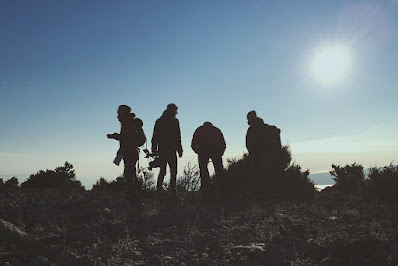 |
| Image: Pixabay |
Computer systems and mobile telephones, mobility and microchips – these are the logos of the world right now. We stay in a world frequently modified by expertise. Even the humanities have frequently modified on account of expertise. Consider it: from charcoal drawings to portray to pictures to digital pictures, we've got come to a great distance within the visible arts. We've used numerous strategies in capturing life and freezing time. New expertise is frequently being developed to make artwork simpler and extra enjoyable. Nevertheless, it is best to know that the artwork of digital pictures isn't so simple as intention and shoot.
The artwork of digital pictures wants ability with a purpose to pull off correctly. Though some individuals could motive out that digital pictures artwork can all the time be edited, many individuals do not likely know the way a lot of work modifying could be. Oh, certain, we are able to say that expertise has reached a stage whereby an individual must do virtually nothing with a purpose to obtain an incredible photograph, however, in fact, it is advisable to know methods to use the instruments correctly with a purpose to do this.
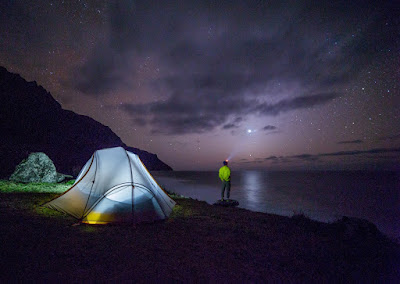 |
| Image: Pixabay |
The artwork of digital pictures, with a purpose to be really mastered, wants three T's: Time, expertise and tactical placement of kit. No, that is not proper. You want time, expertise and treasure. Simply what does this imply?
1) Time – one can't be an on the spot knowledgeable in digital pictures. That you must take the time to be taught all about it. Although you're some type of protégé who has the abilities of a genius, you really want coaching to hone that expertise. Do not forget that for all its energy, a steamroller can't be used to do the work of a hammer. There may be knowledge of harnessing energy correctly.
Taking the time to coach your self within the artwork of digital pictures is one thing akin to sharpening a knife utilizing a grindstone or forging a advantageous katana (that is the Japanese samurai sword) by heating it and folding it over a thousand occasions –it could be painful, however, it's obligatory to supply the very best.
 |
| Image: Pixabay |
2) Talent – in fact, you want a little bit of inherent expertise with a purpose to be really nice on the artwork of digital pictures. That you must have an eye fixed for the themes that may make an incredible {photograph}. In any other case, you'll solely find yourself being mediocre in a subject that requires greatness.
After all, the right coaching can really improve your inherent expertise and allow you to sharpen your abilities within the artwork of digital pictures.
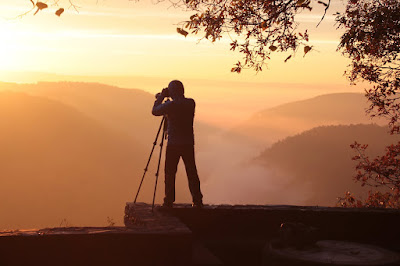 |
| Image: Pixabay |
3) Treasure – as stated earlier than, you'll need the right instruments with a purpose to achieve success within the artwork of digital pictures. This implies that you will want to take a position a whole lot of money. Though there is a whole lot of digital artwork pictures gear that may be purchased at cheap costs, the very best gear wants some critical pocket digging. This, in fact, assessments your braveness as a result of there's nothing scarier to a person than having to tug out his pockets within the title of an untested curiosity.
 |
| Image: Pixabay |
Upon getting invested cash within the artwork of digital pictures, there is not any turning again.
The artwork of digital pictures could appear to be it requires loads. Nevertheless, with a purpose to be really profitable in one thing you want love and love all the time requires sacrifice. You must hold that in thoughts.
Subscribe to:
Posts (Atom)
